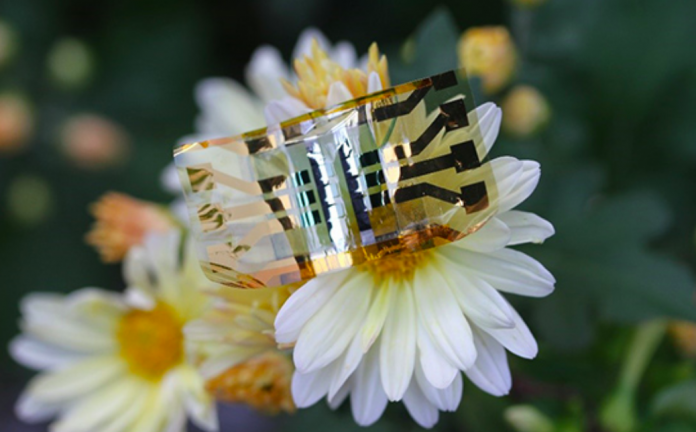The ultraflexible organic solar cell (OSC), or flexible organic photovoltaic (OPV), is 10 times thinner than the width of a human hair and approximately the size of a 5 cent coin, but far more useful. The cell is also as flexible as a mining magnate’s accountant – bendable, foldable and stretchable.
The cell is the focus of a research paper that was recently published in Joule and another scientific study published in PNAS (Proceedings of the National Academy of Sciences of the USA). In the first paper, the researchers said that they developed the cell, made from mechanically robust photo-absorber materials, to achieve a power conversion efficiency of 13% and 97% efficiency retention after 1,000 bending cycles, along with 90% efficiency retention after 1,000 stretching cycles.
“Power conversion efficiency considers how much solar energy can be converted into electricity. The solar energy illuminated on Earth is 1,000 watts per square metre. Our device can produce 130 watts of electricity per square metre. The 13% efficiency we were able to achieve is one of the highest efficiencies in organic solar cells,” said Dr. Wenchao Huang, research fellow in Monash University’s Department of Materials Science and Engineering.
In the latter paper, it was shown that a cell based on nonfullerene blends, given a postannealing treatment, could last for extensive periods of time with minimal degradation. The lifespan has been estimated at 11.5 years.
The solar cell is so light that it can be supported by a flower petal, and still generate almost 10 watts of power per gram. And its potential is promising. As we envisage our technological future today, we imagine mobile phones, watches, the Internet of Things, and medical (or fitness) biosensors as being powered by batteries (hopefully renewably sourced). But what if advanced photovoltaics such as this ultrathin, flexible solar cell could replace the battery in said devices?
Brave New World
Solar PV is a rapidly advancing technology, but perhaps one area in which classic silicon-based solar cells have stalled is their brittle nature.
“Our ultra-flexible solar cells can simultaneously achieve an improved power conversion efficiency, excellent mechanical properties and robust stability,” said Huang. “This makes them a very promising candidate as a power source in wearable electronics to realize long-term monitoring of various physiological signals, such as heart and breathing rates.”
The team, which includes researchers from the Renewable Energy Laboratory of Monash University, the Australian Synchroton, the University of California, and the University of Tokyo, are now setting their sites on commercialization. However, that shouldn’t be too difficult, given that the cell is relatively cheap and can be reproduced at scale with continuous printing technology.






